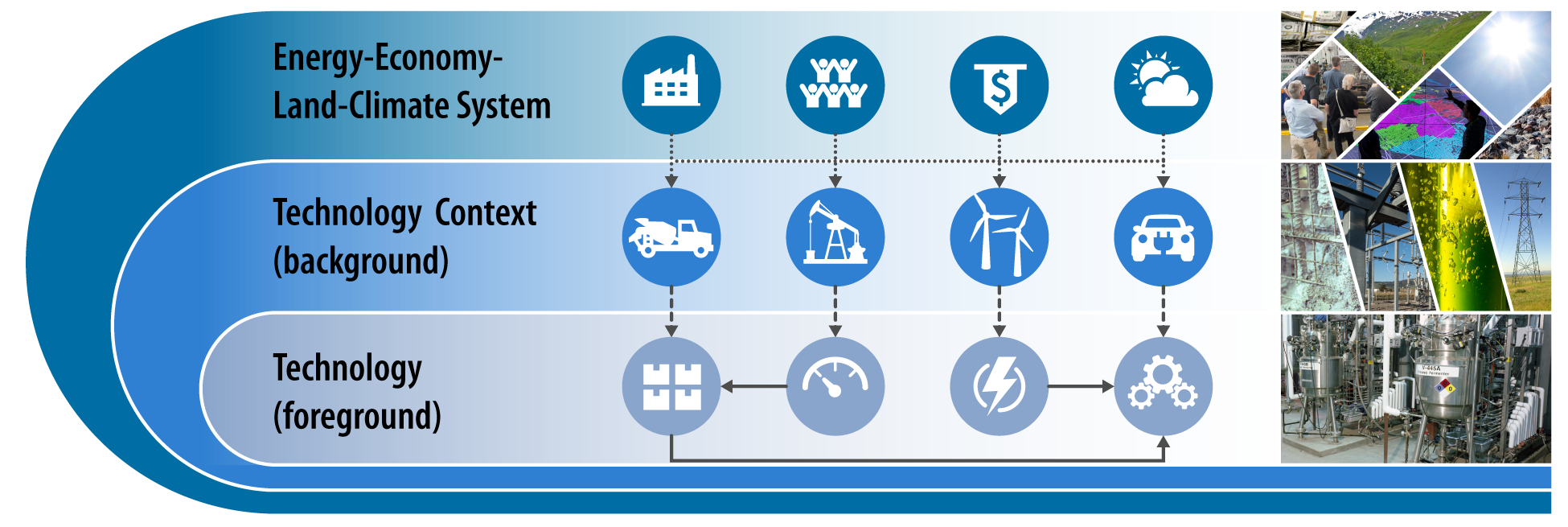2023 AIChE Annual Meeting
(68b) Life-Cycle Assessment Integration into Scalable Open-Source Numerical Models (LiAISON) for Prospective Impact Analysis of Novel Technologies
Emerging technologies require the application of prospective life cycle assessment (LCA)4, which can account for technology (foreground) scaling and process improvements via learning-by-doing, among others. In many cases, the future system context (background) in which the technologies are assumed to operate in is equally relevant.5 Background scenarios generated by integrated assessment models (IAM) can coherently incorporate potential future dynamics of the energy-climate-human-land system. Further, IAM scenarios are harmonized across socioeconomic and climate change mitigation pathways6, which facilitates the comparability of prospective LCAs using different IAMs.
We introduce an open source prospective LCA framework, the Life-cycle Assessment Integration into Scalable Open-source Numerical models (LiAISON), to analyze the non-linear relationships between technology foreground and the future energy system background across a series of midpoint and resource use metrics The integration of LCA and IAM data is achieved using prospective environmental Impact assessment (PREMISE)7. We showcase it by assessing two Power-to-Hydrogen (PtH2) processes, namely Solid Oxide Electrolysis (SOE) and Polymer Electrolyte Membrane Electrolysis (PEME). We compare the technologies to a baseline of hydrogen production via natural gas-based Steam Methane Reforming (SMR) in a US context of multiple energy system and climate change mitigation futures. Besides providing an analysis that specifies the LCA results ranges with temporal and geospatial explicitness across the two technologies, metrics, and impact assessment methods, this research also aims to establish a base framework that can be expanded to use other IAM generated scenarios and US open-source life cycle inventory (LCI) databases. We find that the temporal environmental performance of either technology or their difference to SMR is directly influenced by the underlying background dynamics. Additionally we compare our results by linking two other prospective models with LiAISON - GCAM(Global Change Assessment Model) and ReEDS (Regional Energy Deployment System) to analyze the effect of changing background scenarios using varying predictions in life cycle analysis. 
